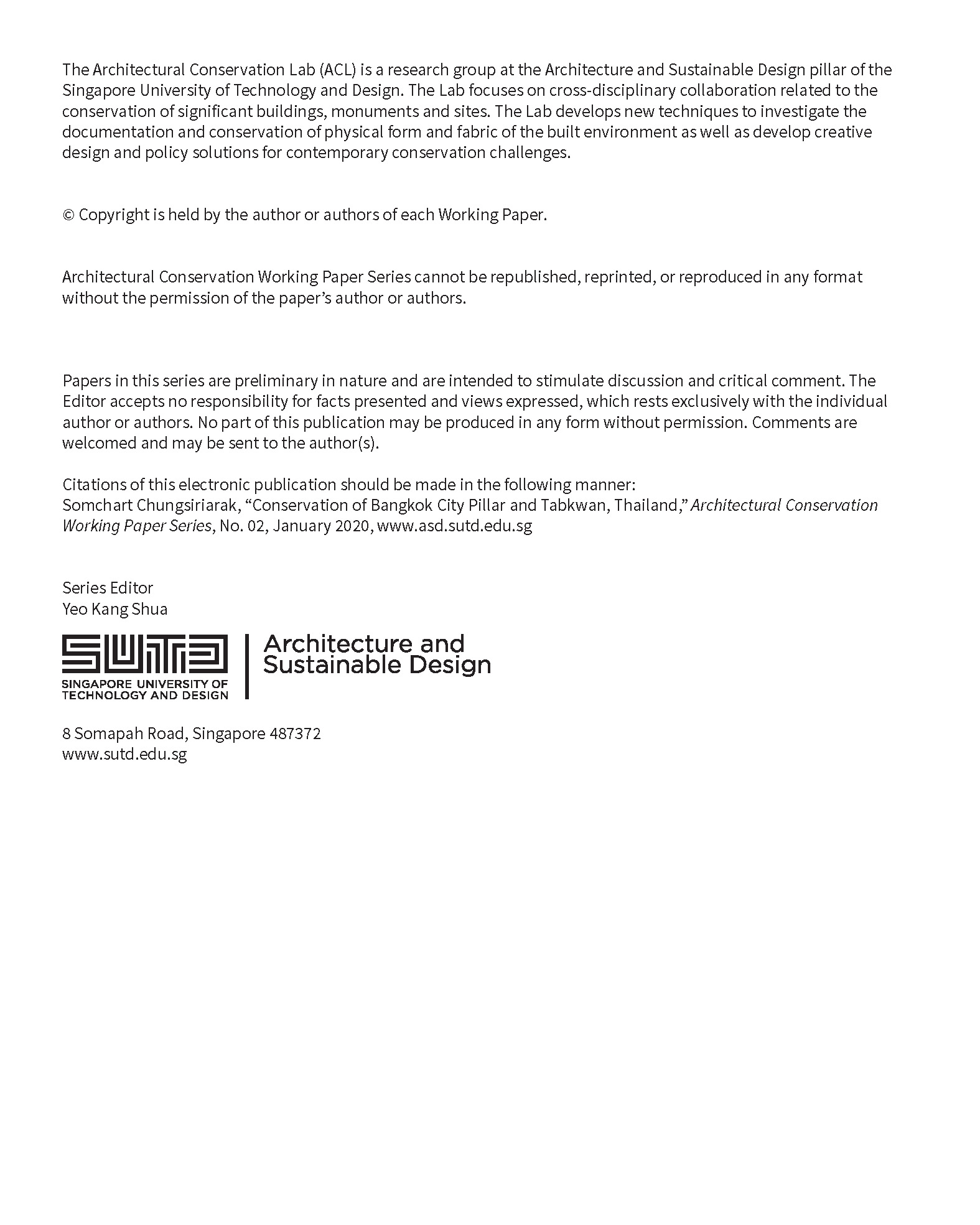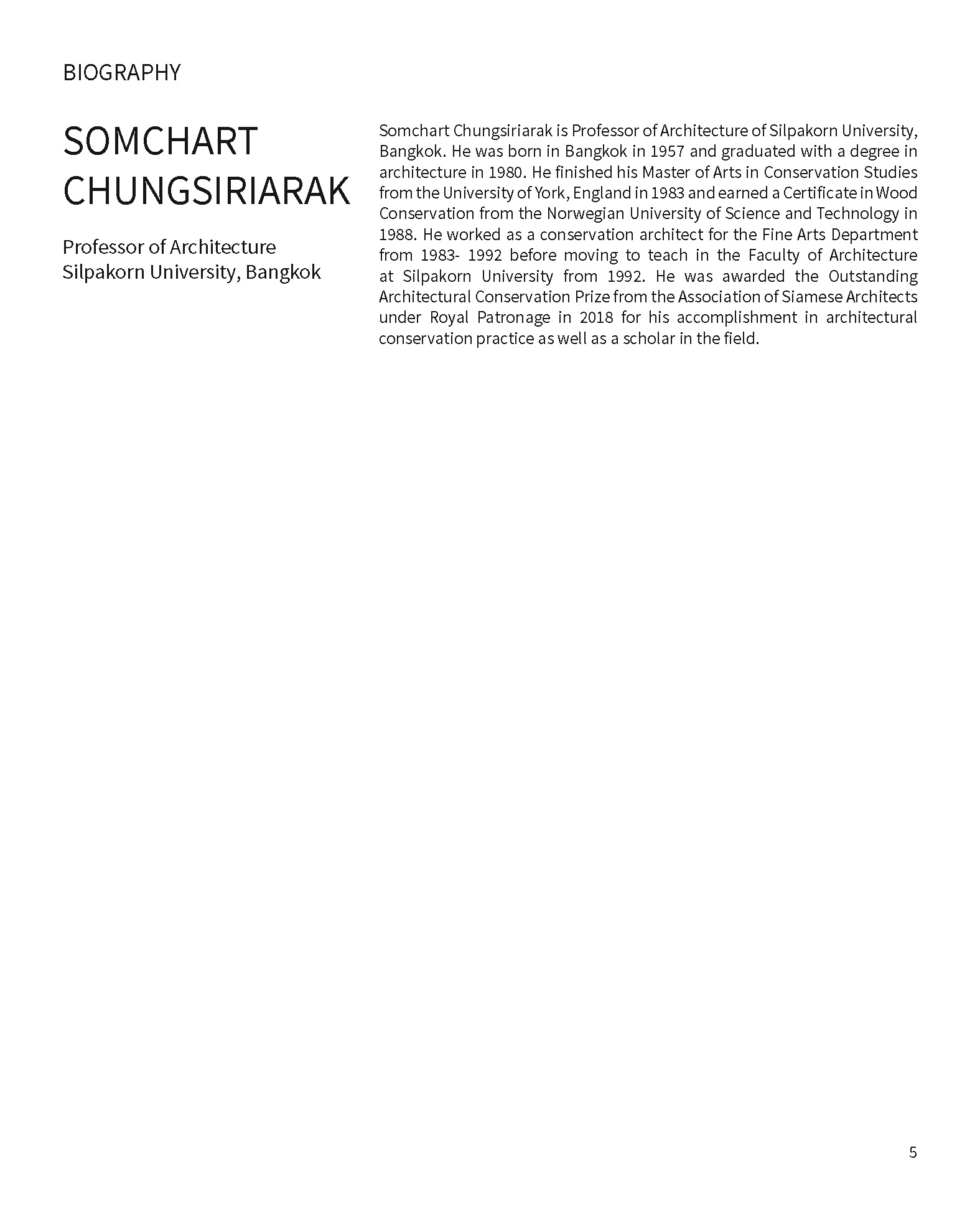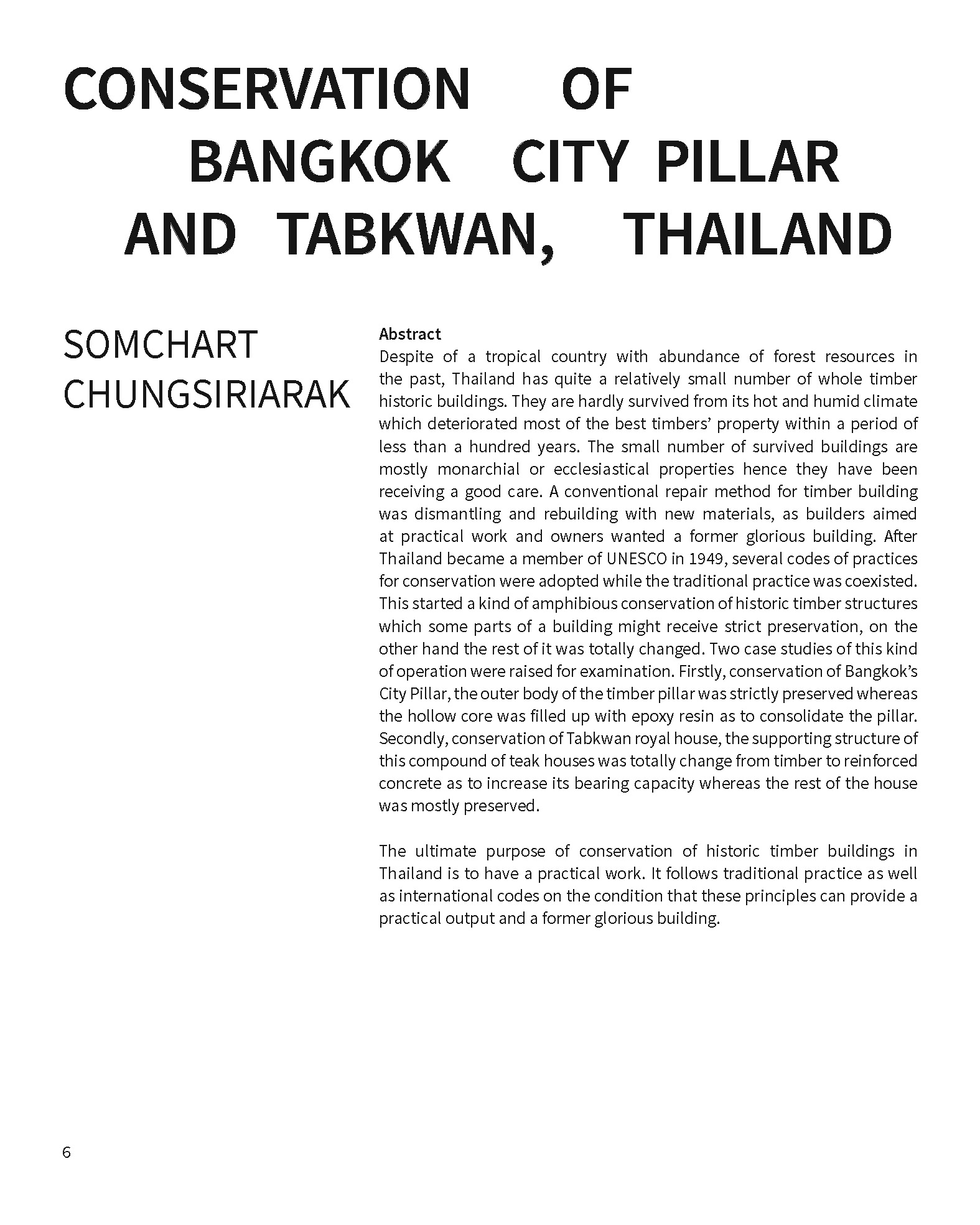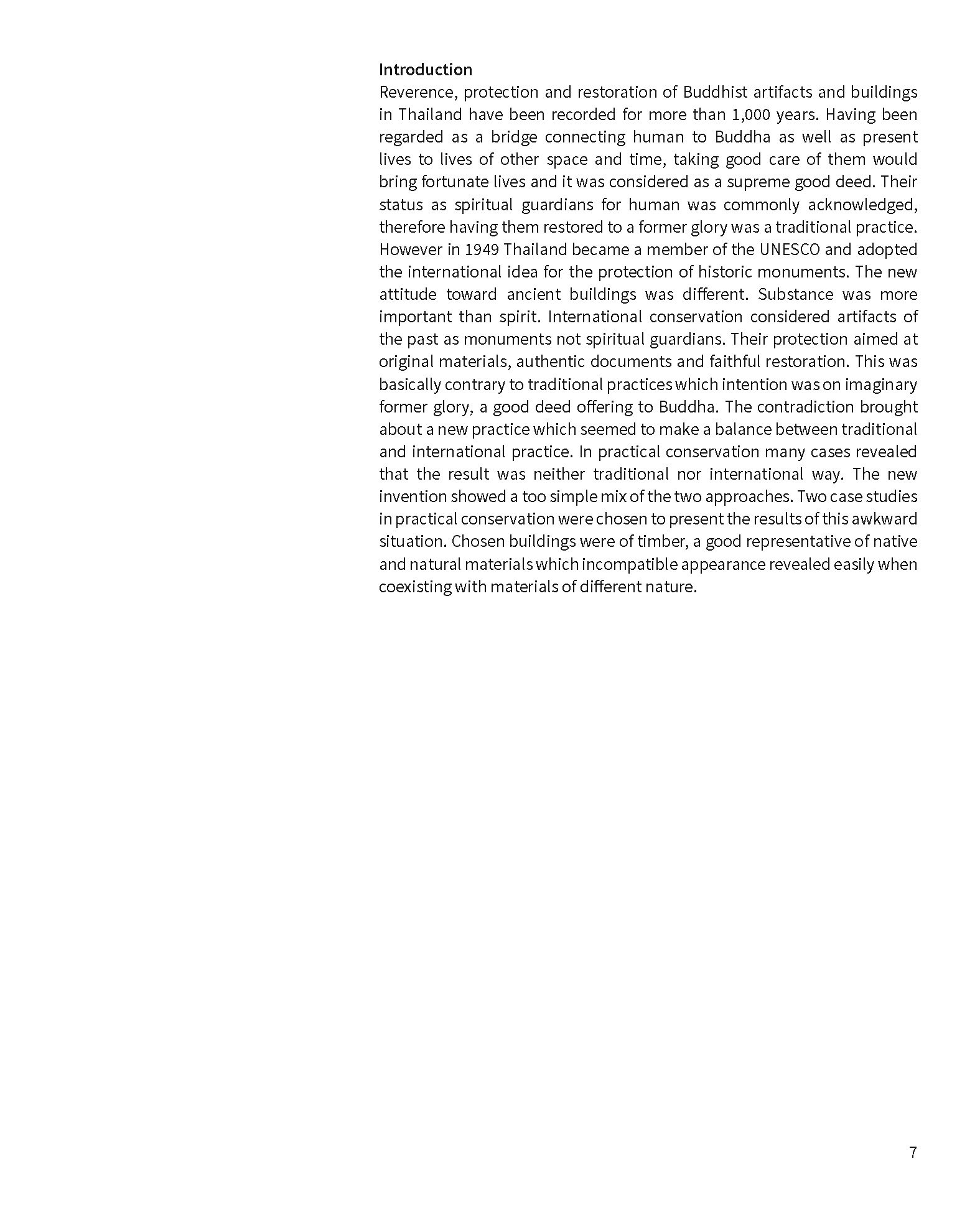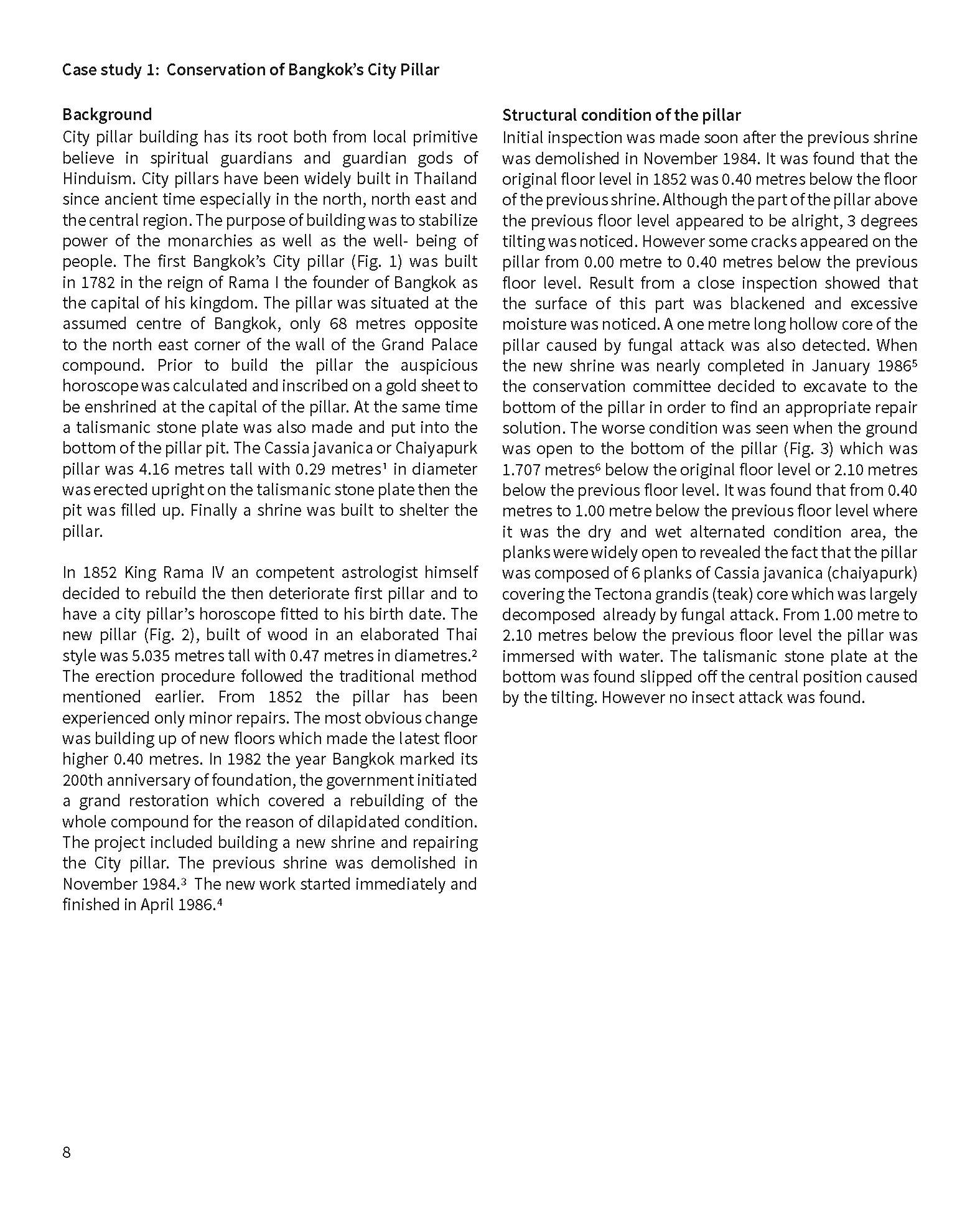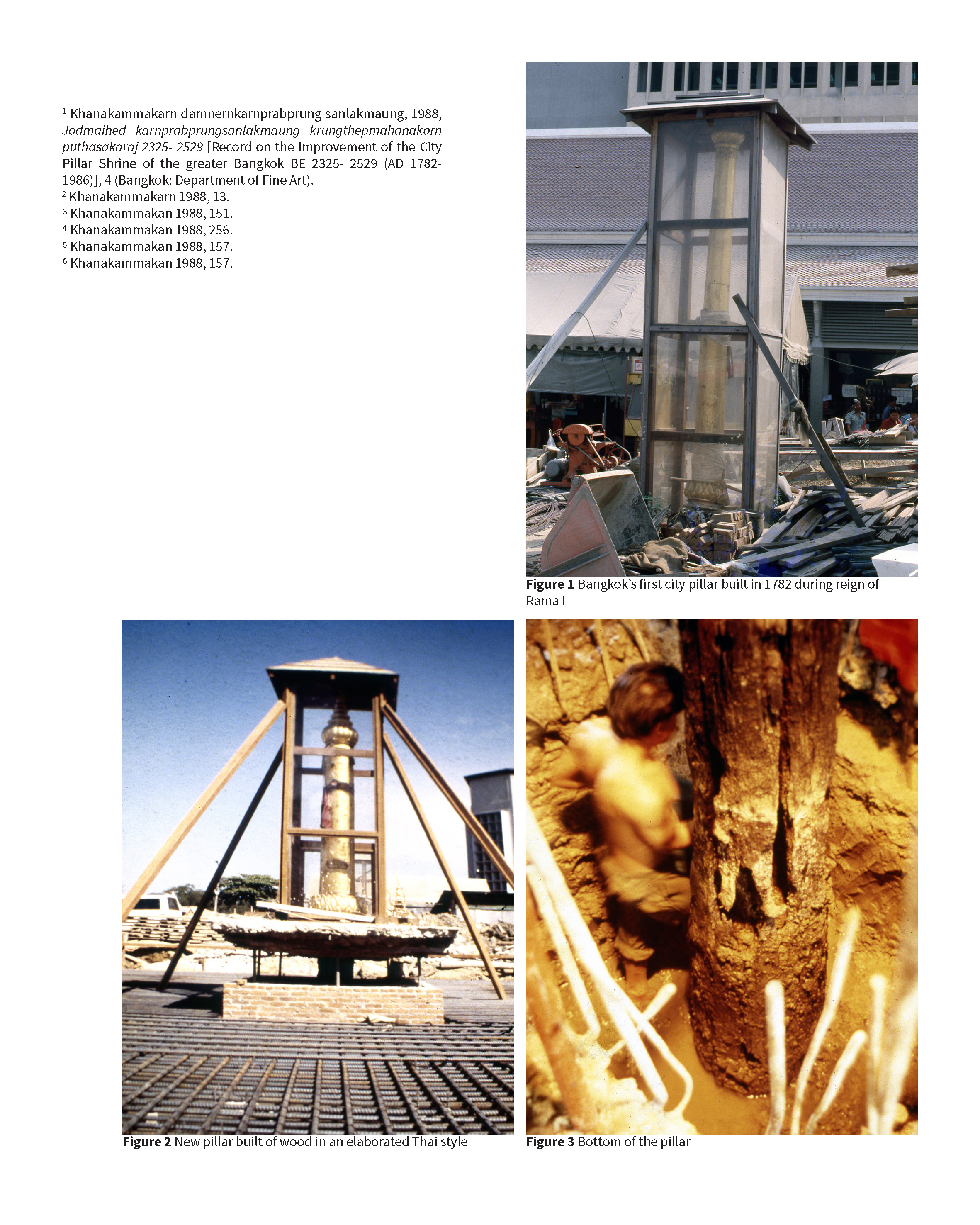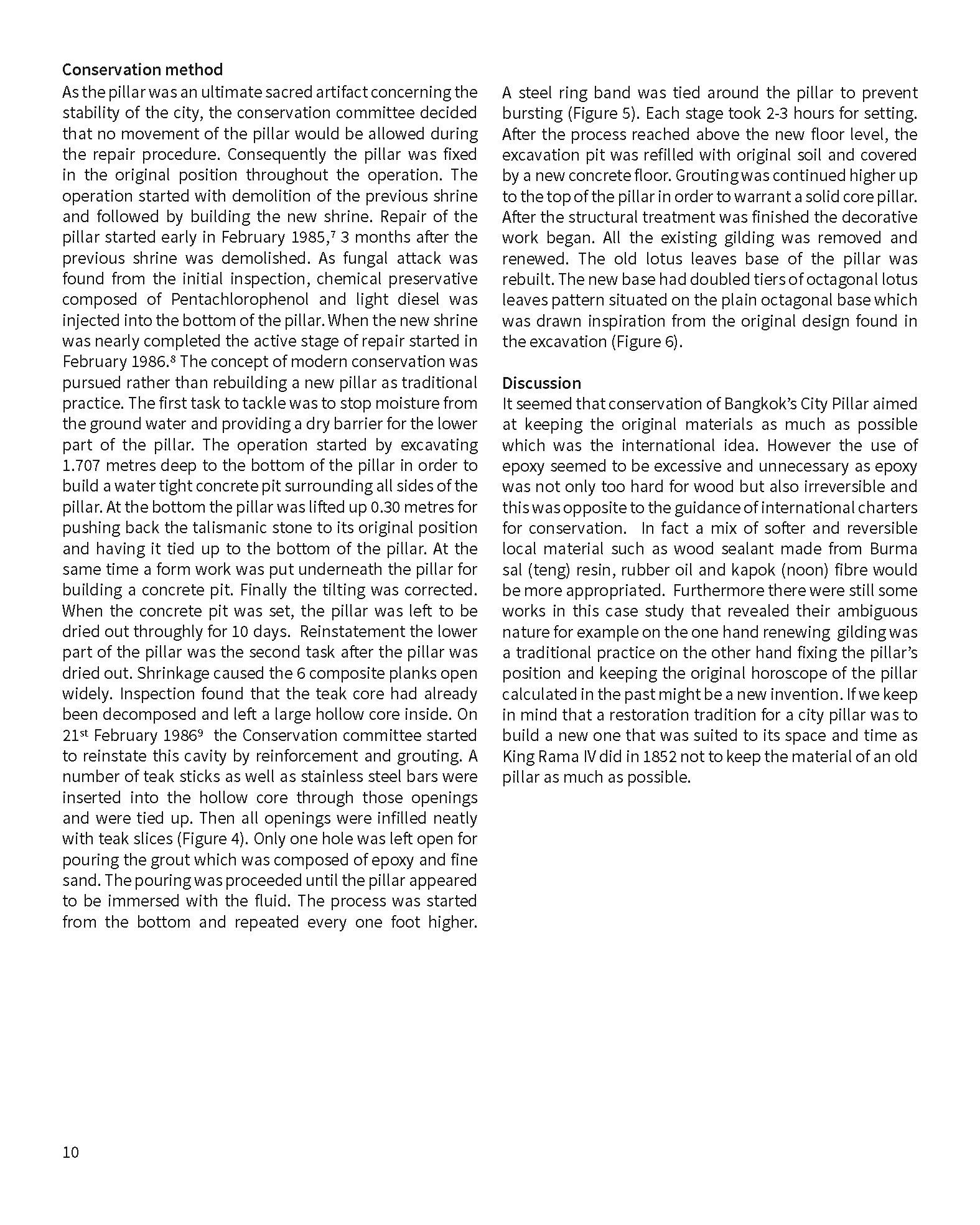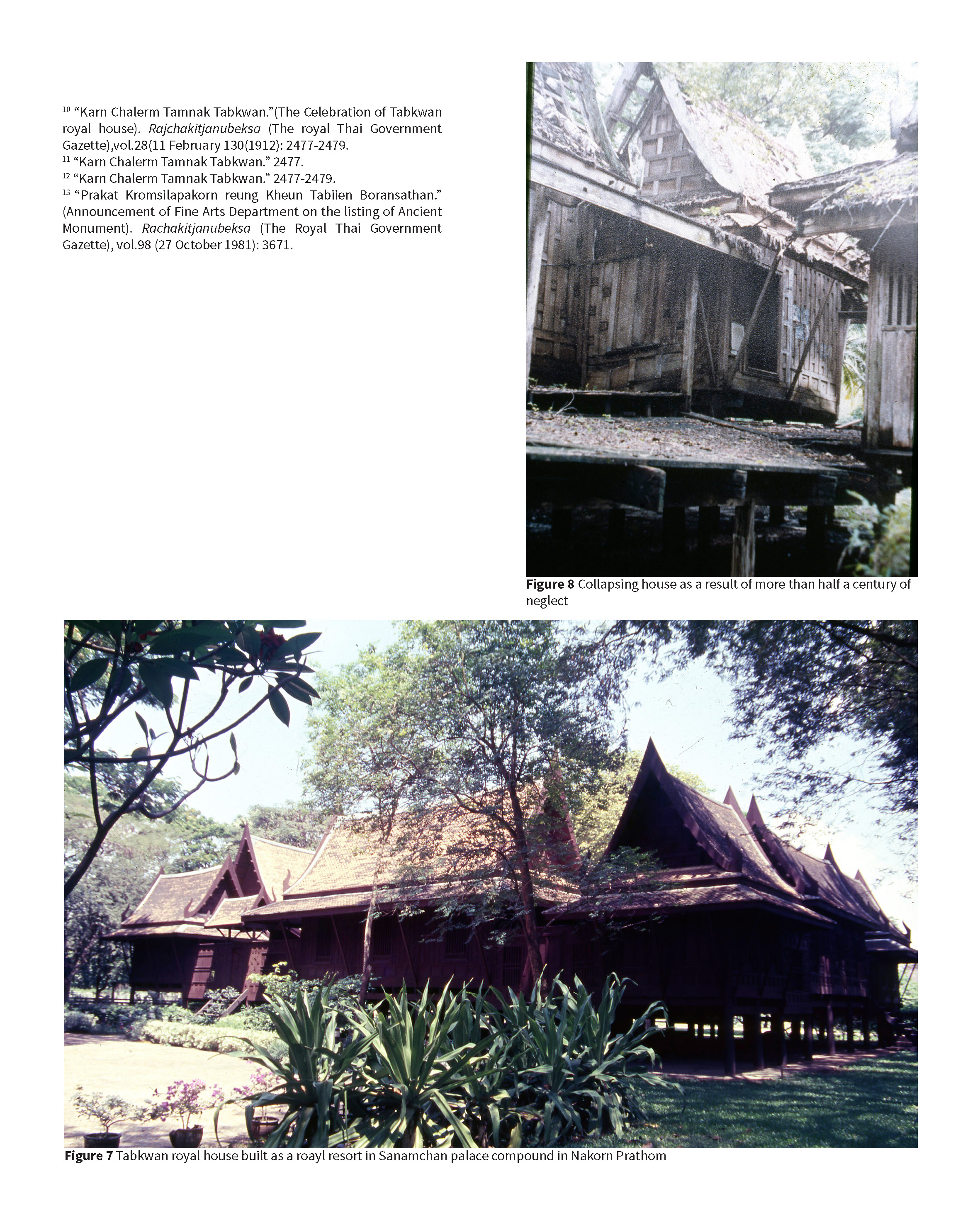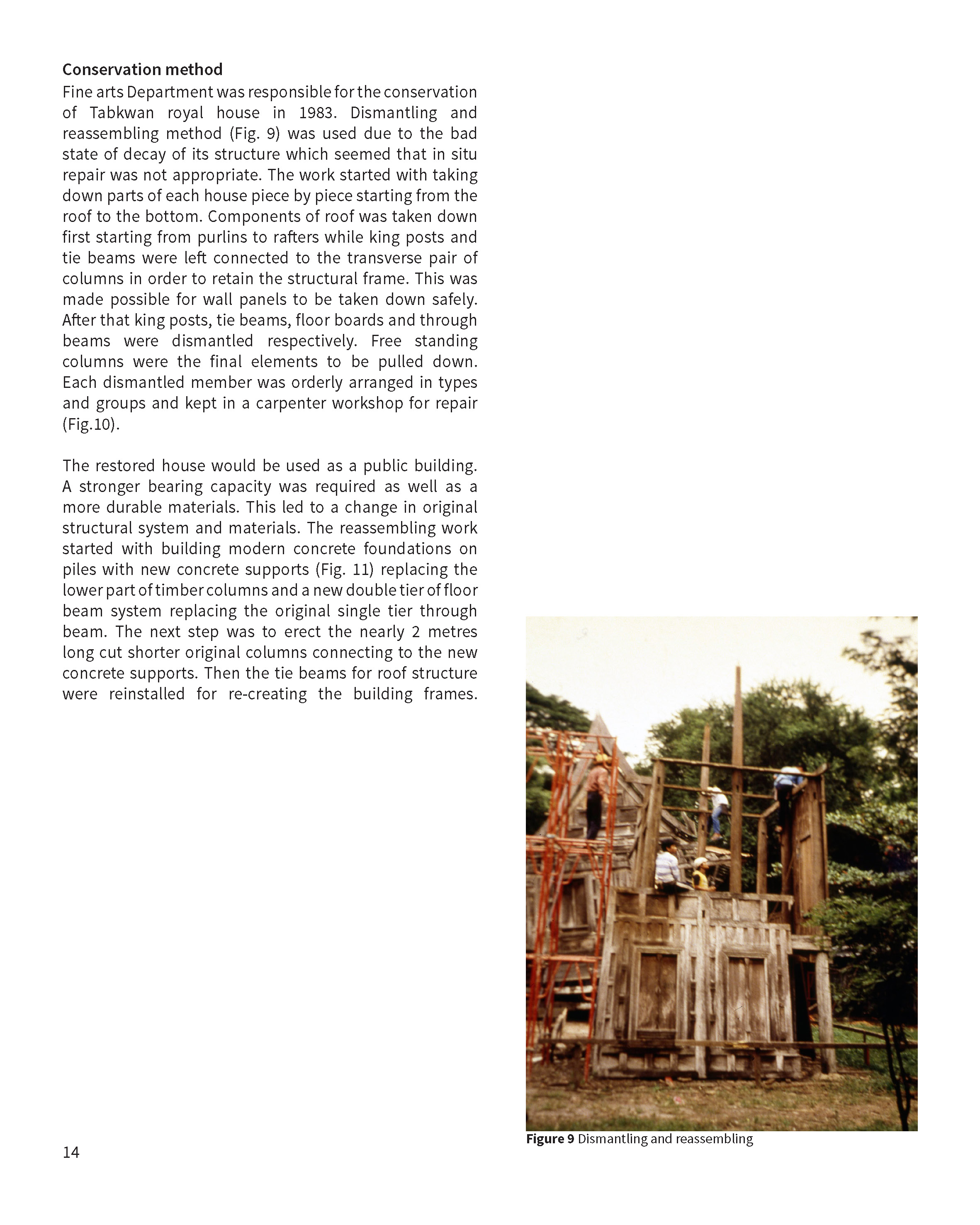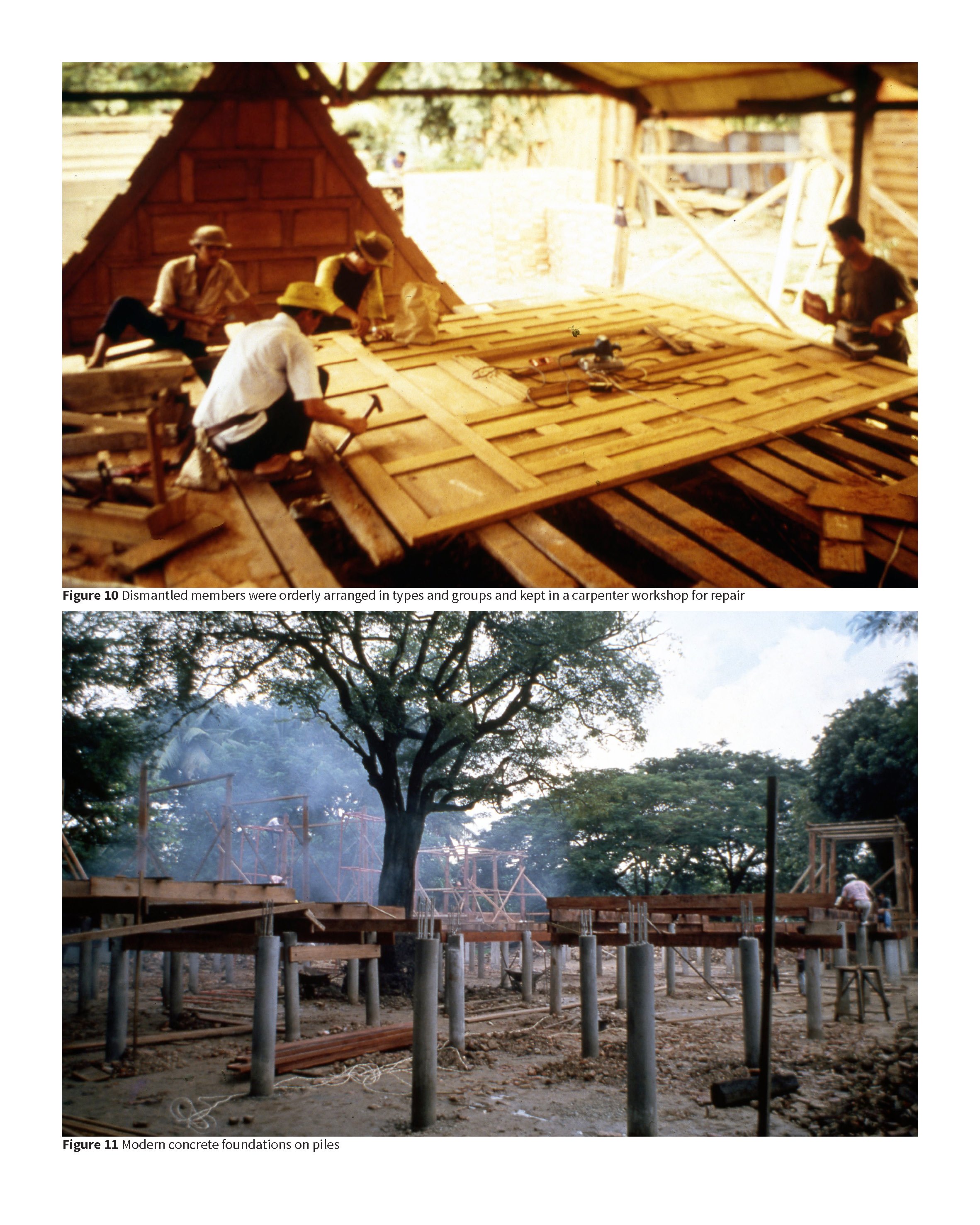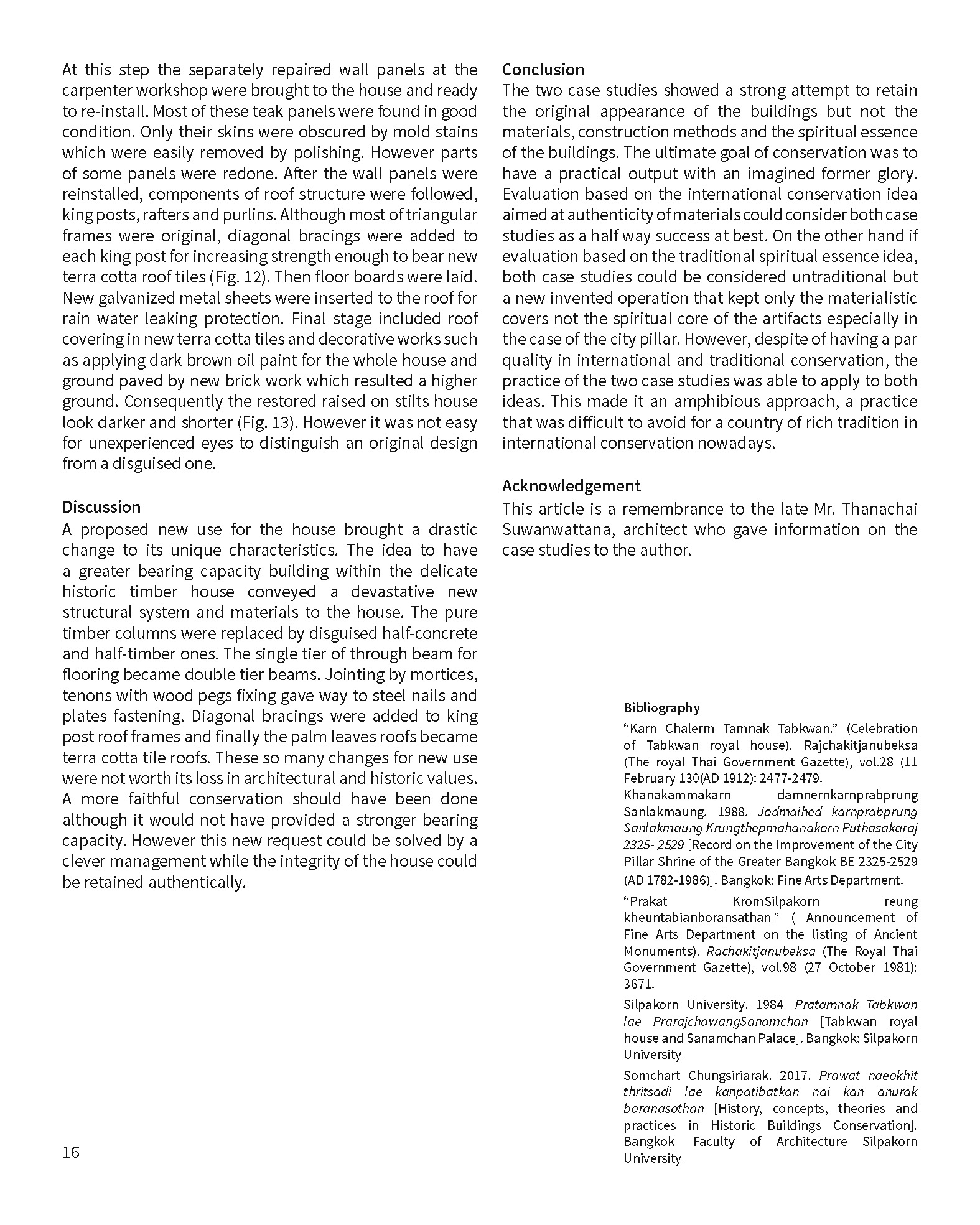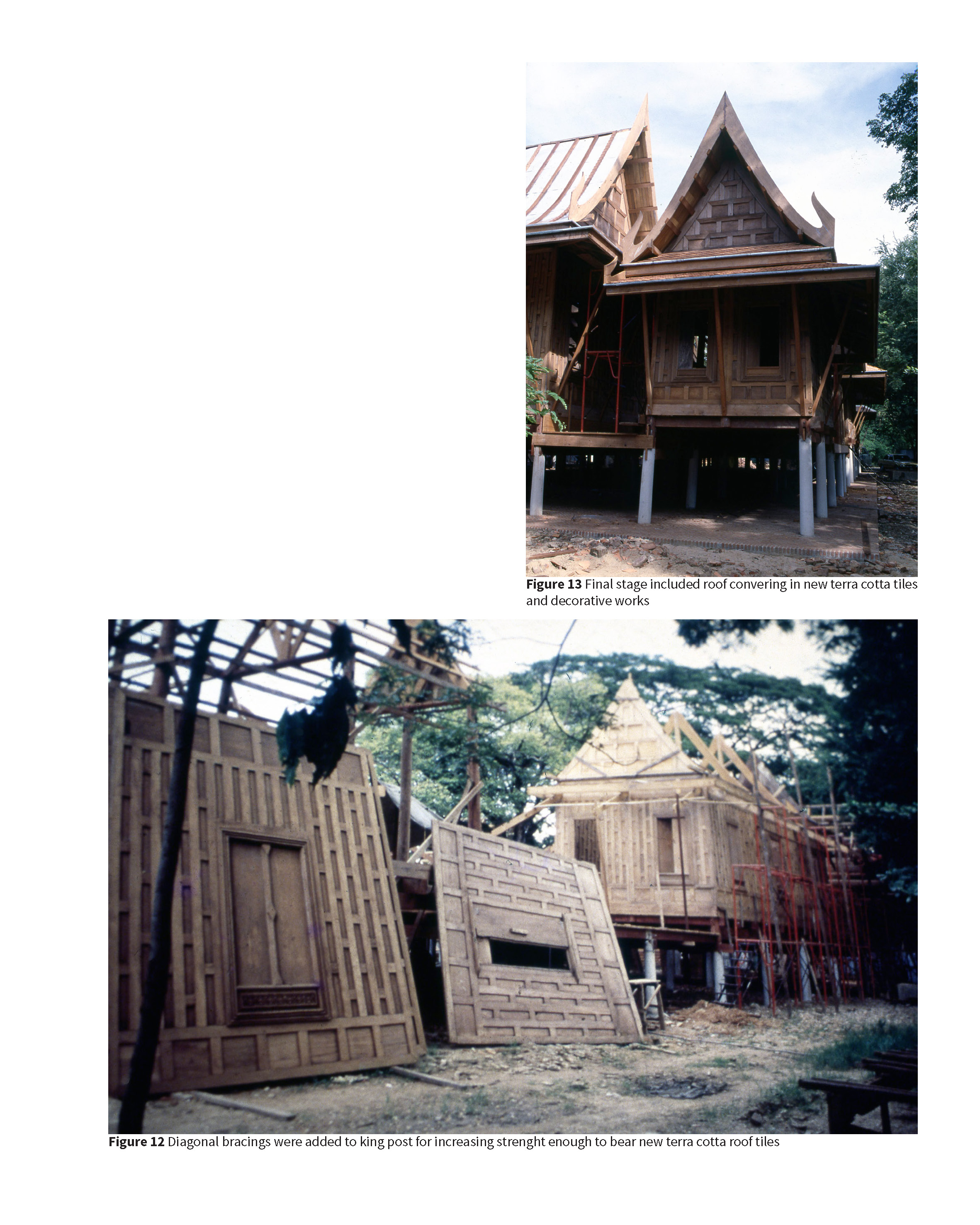Conservation of Bangkok City Pillar and Tabkwan, Thailand

Despite of a tropical country with abundance of forest resources in the past, Thailand has quite a relatively small number of whole timber historic buildings. They are hardly survived from its hot and humid climate which deteriorated most of the best timbers’ property within a period of less than a hundred years. The small number of survived buildings are mostly monarchial or ecclesiastical properties hence they have been receiving a good care. A conventional repair method for timber building was dismantling and rebuilding with new materials, as builders aimed at practical work and owners wanted a former glorious building. After Thailand became a member of UNESCO in 1949, several codes of practices for conservation were adopted while the traditional practice was coexisted. This started a kind of amphibious conservation of historic timber structures which some parts of a building might receive strict preservation, on the other hand the rest of it was totally changed. Two case studies of this kind of operation were raised for examination. Firstly, conservation of Bangkok’s City Pillar, the outer body of the timber pillar was strictly preserved whereas the hollow core was filled up with epoxy resin as to consolidate the pillar. Secondly, conservation of Tabkwan royal house, the supporting structure of this compound of teak houses was totally change from timber to reinforced concrete as to increase its bearing capacity whereas the rest of the house was mostly preserved.
The ultimate purpose of conservation of historic timber buildings in Thailand is to have a practical work. It follows traditional practice as well as international codes on the condition that these principles can provide a practical output and a former glorious building.
Author: Somchart Chungsiriarak
Click here to download this Architectural Conservation Working Paper.



